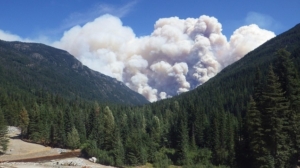Forest Fire Prevention: Facts, the Public Campaign and Best Practices
Forest Fire Prevention: Facts, the Public Campaign and Best Practices
The United States National Park Service estimates that in the United States, 90% of all forest fires are caused by humans and the remaining 10% are from natural causes. Humans can cause forest fires from campfires that are poorly extinguished and lit cigarette butts that are thrown into brush. The remaining 10% of forest fires are caused by either lightning or lava from an erupting volcano. Canada’s rate of man-made forest fire prevalence is much lower than the United States. The Government of Canada estimates that each year 45% of forest fires are caused by lightning, which accounts for up 81% of the total land burned per year, and 55% of forest fires are caused by humans. Canada’s Wildfire Information System provides a detailed weather map, highlighting forests and grasslands around the country that are at risk for fires, and providing up to date information regarding active forest fires.

The Wolverine Creek Fire located northwest of Lucerne, WA began on Jun. 29, 2015 and has consumed an estimated 25,000 acres. The fire was caused by a lightning strike. USFS photo.
In North America, the public campaign to prevent forest fires started in the 1940’s in the United States with Smokey Bear and is the longest-running public service advertising campaign in U.S. history. Since that time, Smokey Bear has become a North American symbol of forest fire prevention as he is widely recognized across the United States and Canada. Smokey Bear’s campaign has evolved from a series of posters and advertisements into active social media presences on Instagram, Facebook, and Twitter.
Forest fires that take place near heavily populated areas are by far the most dangerous because of the threats they make on human life and the subsequent property damage that can follow. The Fort McMurray fire of May 2016 in Alberta, Canada was caused by humans and is the costliest fire in Canadian history, costing insurers an estimated $3.58 billion Canadian dollars. In the United States, those charged with starting a forest fire can face heavy legal consequences. Keith Emerald was charged with starting the 2013 Yosemite Rim fire from a campfire on steep terrain. Although charges against him were dropped, he faced a 5-year imprisonment and minimum $250,000 fine. With the threat of jail time and heavy fines, Americans face harsh punishments for starting forest fires. One practice used to prevent forest fires is to schedule a controlled burn, where land that is at high risk for fire is intentionally burned in a supervised and regulated setting. When properly executed, this can give forests the benefit of fire without posing risk to nearby communities or taxing public resources.
The problem remains that the majority of North American forest fires are caused by humans and this puts strain on our public’s resources. However, under the right conditions, fires can be good for the ecosystem because they leave behind an exposed canopy and fertile soil to promote new plant life growth. In fact, certain species of trees that have serotinous cones like certain species of California’s great sequoia and Canada’s jack pine need fire in order for their seeds to dry, open, and germinate to promote new life. New plant life and tree growth must be supported in order for North American forests to continue providing lumber for our future.
Referenced Links
- United States National Park Service
- Canada’s Wildfire Information System
- Government of Canada
- Forest Fire Prevention Practice of a Controlled Burn
- Smokey Bear’s Campaign Posters & Advertisements
- California’s Great Sequoia
- Canada’s Jack Pine
- Follow Smokey Bear on Instagram, Facebook and Twitter
(Photograph by USDA Forest Service, distributed under a CC-BY 2.0 license)



